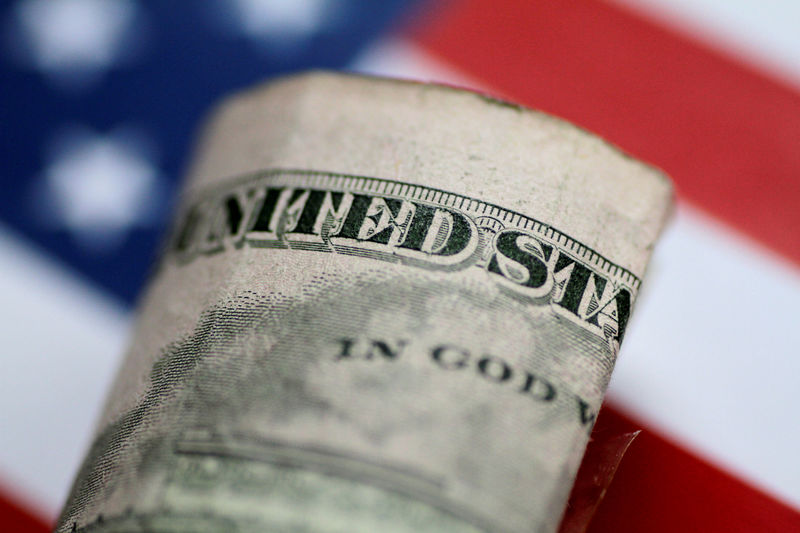Progressive shares fall as Q3 earnings, revenue miss expectations
Investing.com - The U.S. dollar continued to retreat Monday, adding to Friday’s losses after the dismal jobs report raised expectations of early interest Federal Reserve rate cuts.
At 04:20 ET (08:20 GMT), the Dollar Index, which tracks the greenback against a basket of six other currencies, slipped 0.2% to 98.722, after sliding more than 1% on Friday.
Dollar slumps after weak payrolls; Fed to cut?
Data released on Friday showed that U.S. nonfarm payrolls rose by just 73,000 in July, well below forecasts, and this was accompanied by sharp downward revisions to May and June figures.
The unemployment rate also ticked up to 4.2%, reinforcing fears of a slowing U.S. labor market, prompting traders to lift the probability of a September rate cut by the U.S. central bank, so that it is now priced at around 90% by markets.
This has seen the two-year Treasury yield fall to a three-month low of 3.6590% on Monday, while the benchmark 10-year yield trades not too far from a one-month low at 4.2493%.
U.S. President Donald Trump responded to the disappointing payrolls data by firing Bureau of Labor Statistics Commissioner Erika McEntarfer, accusing her, without providing any evidence, of faking the jobs numbers.
“Uncertainty about the quality of U.S. data is not a good look for U.S. asset markets and could add some more risk premium both into the dollar and Treasuries,” said analysts at ING, in note. “For Treasuries, this week sees $125bn in auctions of three, ten and thirty-year Treasury notes. Let’s see how those auctions go.”
Adding to the bad news for the U.S. currency was the unexpected resignation by Fed Governor Adriana Kugler, which has opened the door for Trump to appoint a dovish replacement, potentially adding pressure on Fed Chair Jerome Powell to cut interest rates.
“An earlier replacement for Kugler would likely add another dissenter to the Fed’s current stance of unchanged rates and turn up the internal pressure on Powell,” ING added.
Euro has more upside
In Europe, EUR/USD dropped 0.2% to 1.1563, after the single currency benefited from sharp gains on Friday.
“With an important low made near 1.1400, we suspect there will be plenty of buyers in the 1.1500/1520 area – should it make it that low. 1.1700 seems a reasonable target for the next couple of weeks,” said ING.
The number of people registering as jobless in Spain fell by 0.1% in July from a month earlier, leaving a total of 2.40 million people out of work, data from the Labour Ministry showed on Monday.
The number is the lowest since 2.39 million jobless people registered in June 2008.
GBP/USD fell 0.1% to 1.3274, while USD/CHF rose 0.6% to 0.8085, with the Swiss franc continuing to be hit hard after Trump hit the country with one of the highest tariffs in his global trade reset.
“If those tariffs stick, this will add to the disinflationary forces in Switzerland, which are keeping CPI near 0% year-on-year,” said ING.
Yen hands back gains
Elsewhere, USD/JPY traded 0.3% higher to 147.94, with the Japanese yen handing back some of the previous week’s gains.
The yen was an outlier among its peers last week, and saw a heavy dose of safe haven demand on Friday.
AUD/USD rose 0.1% to 0.6482, while USD/CNY dropped 0.5% to 7.1763, after U.S. Treasury Secretary Scott Bessent said on Friday that he believed that Washington has the makings of a deal with China and that he was "optimistic" about the path forward.
